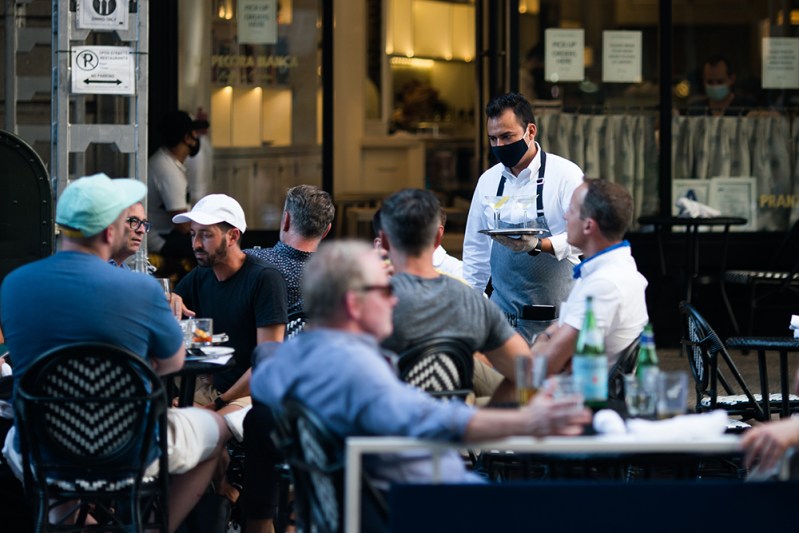
As the pandemic enters its third season, people are justifiably jonesing for some of the old ways. We’re eager to dine out again, patronize bars, and take in a movie. But if we don’t want to live in this new upside-down world forever, we need to be careful when it comes to embracing pre-COVID customs. The pandemic is still very much in full swing.
Restaurants are presently adapting to a seasonal shift as well as to social distancing demands. Cooler autumn weather spells less al fresco dining, something that can be relatively safe given the openness and natural ventilation on hand. Dining scenarios are moving inside where it’s warm but also trickier to adhere to public health protocols. But damned if industry types aren’t getting creative, again, in a year that just keeps issuing gut punch after gut punch.
It’s such a challenging situation. You can’t eat and drink with a mask on. Dining is best in the company of others as it’s a social ritual as old as time. We like to be near our waiters as they explain a dish or our wine directors as they describe why the Muscadet glass pour is worth checking out. It’s an industry not exactly set up for a public health crisis, let alone an ailing economy.
More than 100,000 restaurants across the country have closed already, according to the National Restaurant Association. How do we keep that number from doubling as the cold grip of winter tightens? Fire pits, air filters, and garage doors help, but don’t always result in a full-on fix. Outdoor heaters are great, too, but they’re also expensive and sometimes don’t line up with city ordinances or fire codes.
In Breckenridge, ski season isn’t too far off. The chilly evening air has arrived and restaurants are adjusting. Places like Aurum are borrowing from concepts tried in places like Aspen a year or so ago, like the use of yurts. The elevated tents will host groups of a half dozen or so and are set up with their own electrical lighting and heating. It’s been reported that the restaurant was considering the yurt route even before the pandemic broke, with the hopes of offering something a little off the beaten path. Now that it’s here and sticking around, the concept has grown all the more appealing.
Takeout will undoubtedly remain popular as many people remain wary about getting out and about. Food industry types have talked a lot about the ghost kitchen approach, one that will likely only grow especially as people return indoors to eat. Essentially, these are restaurants that have no dining space and simple use a kitchen to create takeout food, sometimes sharing the cooking spaces to save cash.
Food cart pods appear to be hanging on and some have wondered if the pandemic will lead to another food cart revolution of sorts. They benefit from outdoor space and shared costs of weather-appropriate items like umbrellas and heaters. In the foodie town of Portland, many of the temporary permits issued to eateries to allow for additional outdoor eating are set to expire in early November. Worse, that’s when the city will be overcast and rainy on the daily. Fortunately, the city will likely extend the permits and restaurant owners will find ways to keep the rain at bay.
Restaurant group Jester Concepts in Minneapolis utilize bipolar ionization units purify the air in some of its eateries, a new form of technology that’s costly but may yet prove to be a savior. In Chicago, the city recently ran a competition to reward the best ideas about dealing with dining amid the changing weather. Presently, the top ideas are being considered and will be formally announced the week of October 5th (a heated table is rumored to be one of the cooler concepts). A prize of $5,000 is set to go to the best concept of the lot.
There aren’t always silver linings, but one here is the fact that Americans love their restaurants and want to help in any way they can. What that might mean this fall and winter is trying dinner in a yurt, eating restaurant grub at home, or seeking out unique pop-ups that are both safe and offer some sense of dining out.


